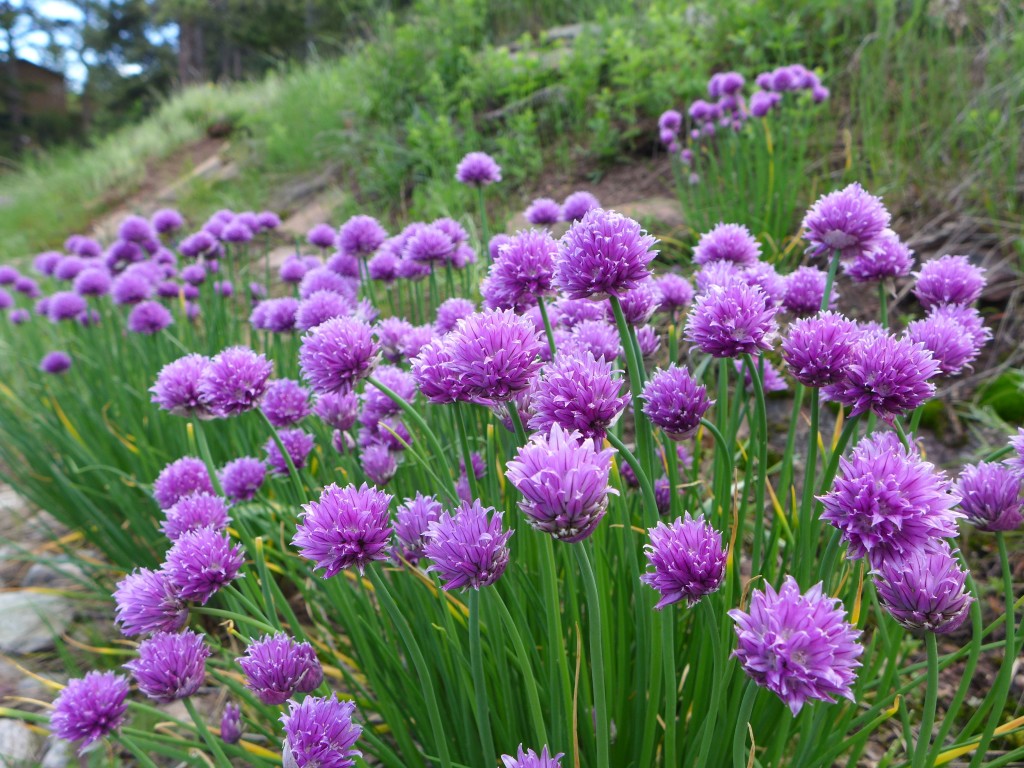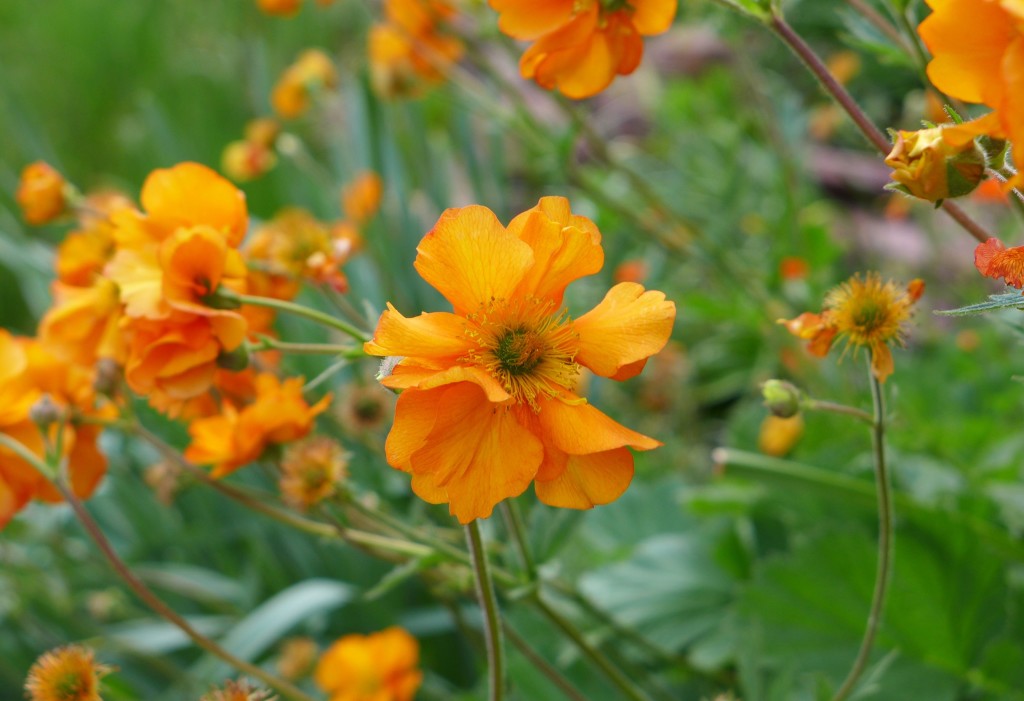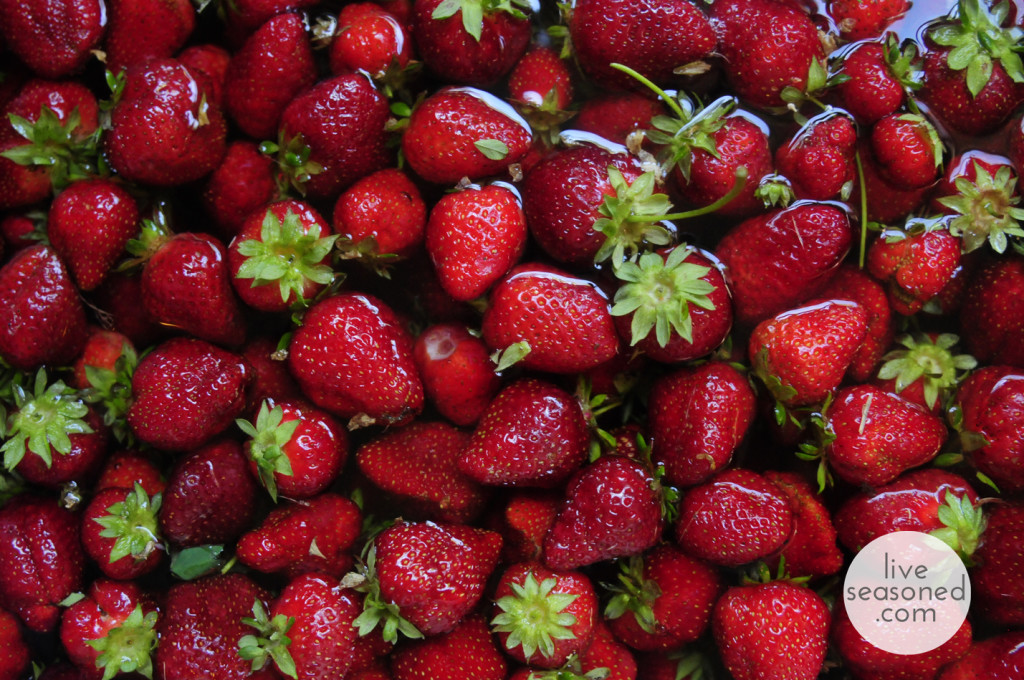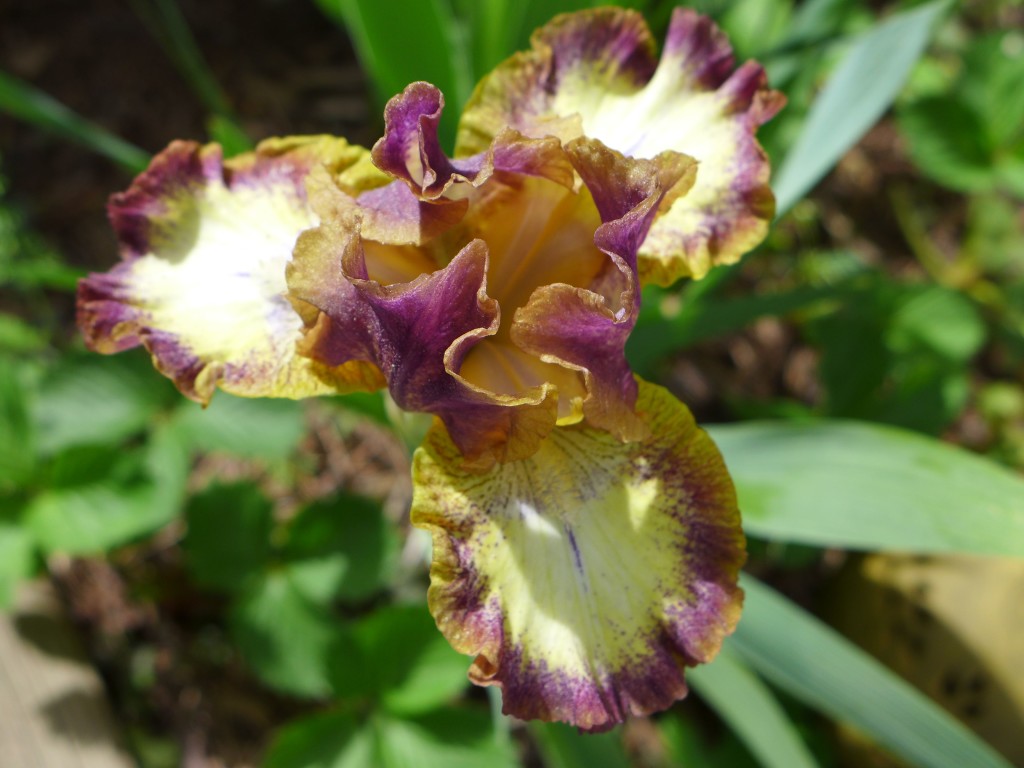On the first Wednesday of each month we like to pause and take a look at what’s going on in the world around us, with a particular focus on animal activity, farmers’ fields, and environmental holidays.
We finally made it to our favorite season! To be fair, we love them all, but there’s just something special about summer with its warm hot days, bbqs, miles of fresh veggies and fruit (particularly the ripe watermelons), and long nights on the deck. Last week was still a bit chilly up in the mountains, but I’m happy to report that summer has finally arrived! We’re planning our first camping trip as a family of four this weekend, and I’ve gone a little crazy making some homemade bug spray and sunscreen this week, but more on that in another post.
It’s the Season
In researching animal activity for the month of June, this is what we’ve discovered : it’s time to get it on… and if you’re successful in that arena, it’s time to care for those young! We caught these ladybugs in the act last week, and it was around this time last year that we were keeping our eye on the osprey nest with freshly hatched chicks! By now, most migrating animals are in their summer homes (winter if you’re in the southern hemisphere); if they need a nest or den, they’ve built it, and now they’re just looking for a mate and raising the next generation. Want to hear more?
Black & Grizzly Bears
Adult female black bears breed every other year in June or July. If a female’s cubs perish before the breeding season, she may mate that same year and birth cubs the following year. During this time of year, a black bear leaves its day bed, a shallow depression on the ground, in late afternoon or dusk, and may remain active throughout the night, although feeding and breeding activity can take place during daylight hours as well.
Grizzly bears also begin to look for mates around this time of year. Female grizzly bears can mate with more than one male during the breeding season. When a female grizzly becomes pregnant, the development of the embryo temporarily stops for several months, a process called delayed implantation. If a female grizzly is still underweight by autumn, her body will tell her to not proceed with the pregnancy and the embryo will reabsorb. This gives her a head start on gaining enough weight to have a successful pregnancy the following year.
Snakes
As temperatures warm up, snakes start to become more active. It all begins with basking. Initially, snakes typically do not move far from their den, but will stay pretty close and bask in sunny areas, sometimes returning back into their dens in the evenings when temperatures cool off again. Once spring and summer temperatures are consistently warmer, the snakes will begin to move away from their den to their summer habitat to locate foraging areas, to find mates, or to give birth. While in their summer habitats, which can be widely distributed, they will make relatively shorter movements, so in a few weeks you’ll be seeing plenty less snakes than you are now. Many human and snake interactions occur during the spring and fall when snakes are moving from one seasonal habitat to another. A couple weeks ago, Sarah had to free a large black snake that became tightly tangled in a piece of netting in my yard. It took over a half hour to cut the snake free during which we were both probably having mini heart attacks. We suggest looking up the snakes in your state and having a clear idea of which snakes are venemous and which are not that way you’ll know how much to freak out when you encounter one ;).
Fireflies!
If you live on the east coast, we’re betting that you’ve seen a firefly or two… and if you haven’t, then that’s a sure sign that you need to get outside this summer! This year when you see a field of fireflies, take a moment to carefully observe the flashing. Did you know that each species of firefly has its own flashing pattern? The patterns vary in both the number of flashes and the delay between flashes. With dozens of species making the eastern half of the US their home, it’s likely that on any given night you’re watching a few different species at one time. Both the males and the females flash, they do it in a call and response pattern, with the females respond to males that they are attracted to. While seeing a field of fireflies is magical on its own, we think it’s even more amazing to know that there are synchronous fireflies, with males that time their light display to go off at the same time as other nearby males. June is the best time of year to observe synchronous fireflies in the US, where they are likely to be found in the Smokey Mountains.
Fruits and Veggies
It’s berry season! Blueberries, strawberries and raspberries are ripe for the pickin’ and perfect additions to any breakfast, snack or dessert you whip up. Sarah is already complaining about the heat in North Carolina. Right now she’s on a diet of cucumber salad and green salads with a heavy dose of fresh herbs and sautéed garlic scapes, all of which are in season. Besides the berries and herbs, your local farmers’ market should have a bounty of broccoli, cabbage and cauliflower. You should also see leeks, fennel, pea greens and sugar snaps among the veggie piles. What late spring veggies are you excited about? Garlic scapes take the cake for the both of us!
Environmental Holidays
- June 5th – World Environment Day
- June 6th – National Trails Day
- June 8th – World Oceans Day
- June 15th – World Wind Day
- June 15th-21st – National Pollinator Week
- June 17th – World Day to Combat Desertification
- June 21st – Summer Solstice!
- June 24th – Bike to Work Day in the Denver/Boulder area!
- Throughout the month you can participate in the Great American Campout. Either get out there and camp on your own or join a group campout!
- Horseshoe Crab Survey – a great way to get personally involved in data collection if you’re in the Delaware/New Jersey area. It takes place on multiple dates throughout May & June.





